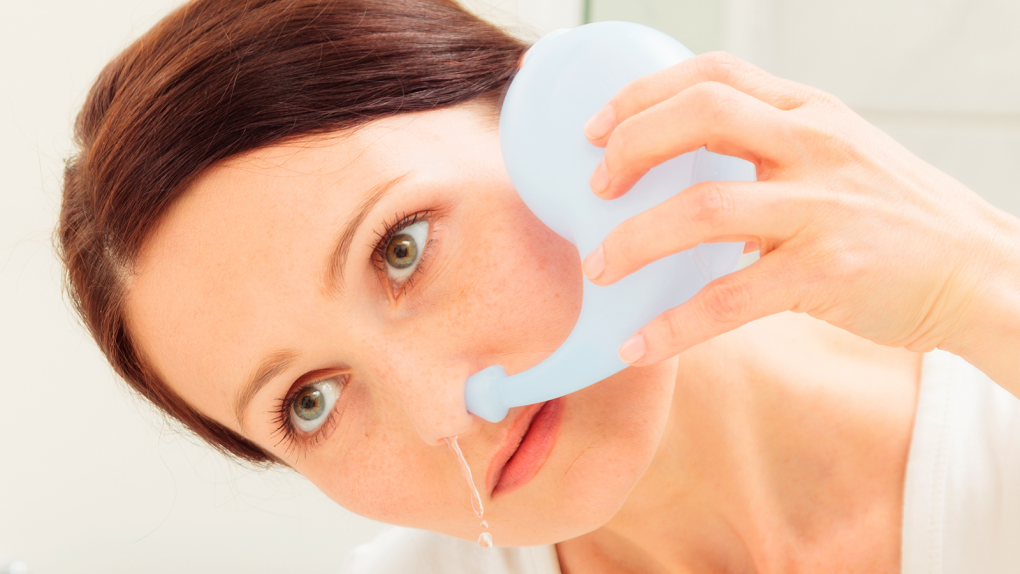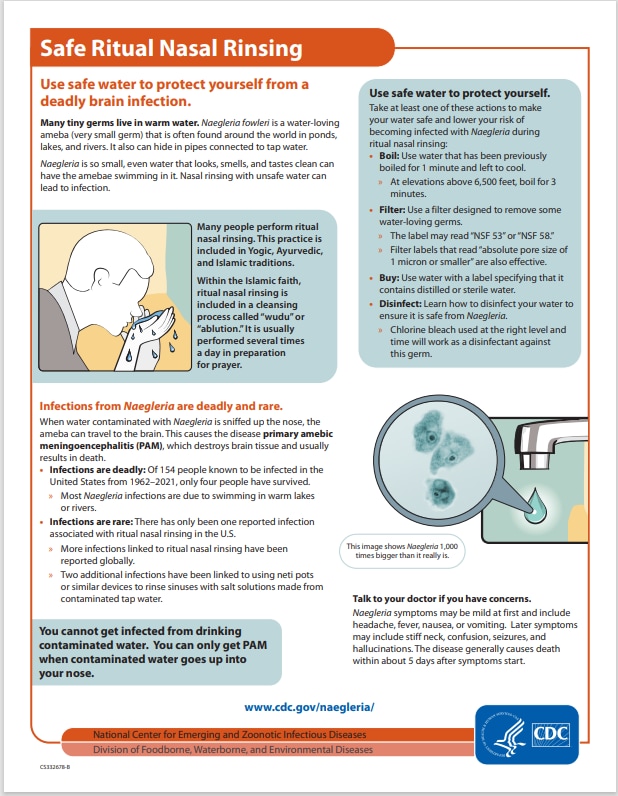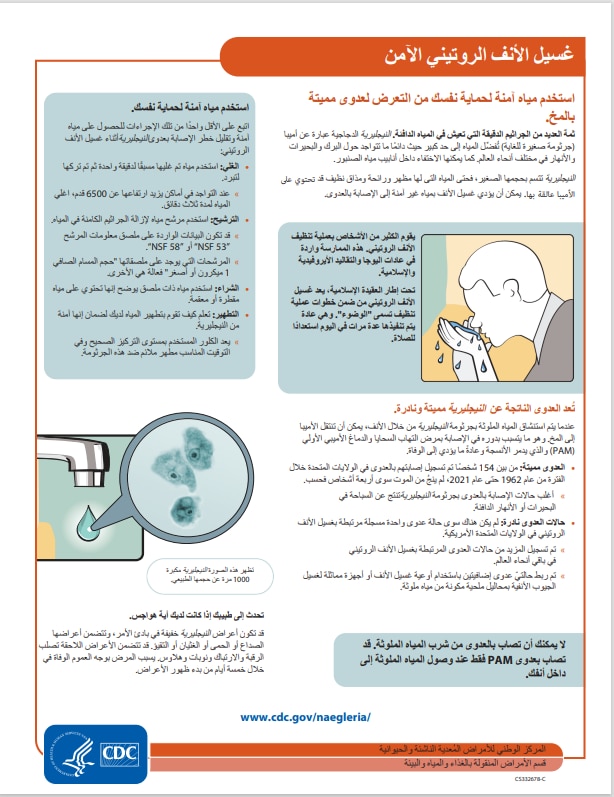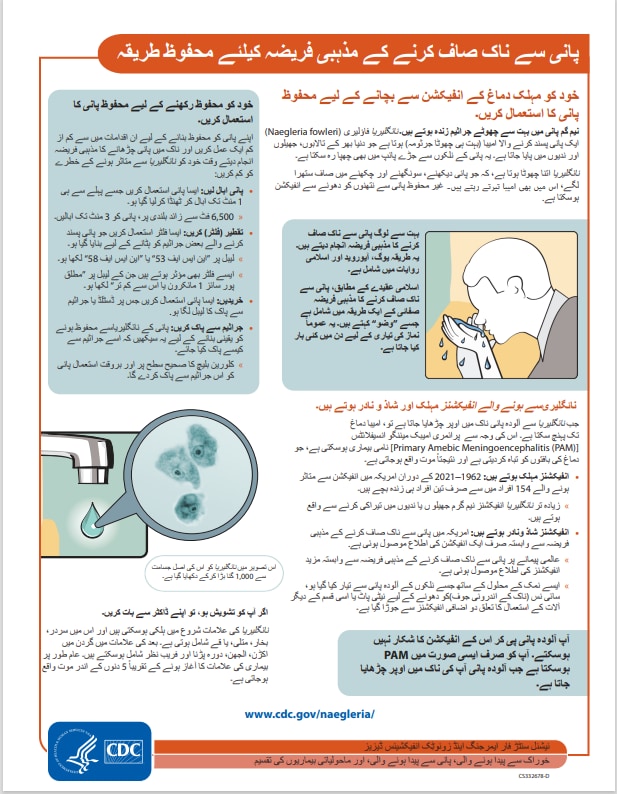Key points
- Although rare, people have died from rinsing their sinuses with tap or faucet water containing the germs Naegleria fowleri and Acanthamoeba.
- When rinsing your sinuses or nasal passages, use store-bought distilled or sterilized water, or tap or faucet water that's been boiled and cooled.

Overview
When immediate care is needed
Many people rinse their sinuses and nasal passages. Some do it to ease symptoms of colds or allergies. Ritual nasal rinsing is common in some religious practices, including Islam, as well as yoga and ayurveda.
Germs such as the amebas Naegleria fowleri and Acanthamoeba can grow in public and private water tanks and pipes. They can also grow in the pipes and water heaters in some homes and buildings.
Naegleria fowleri and Acanthamoeba can pose a serious risk to your health if they are in the water you use to rinse your sinuses or nasal passages. If the amebas go up the nose and to the brain, they can cause nearly always fatal brain infections. Although rare, people have died from rinsing their sinuses with tap water containing Naegleria fowleri and Acanthamoeba.
If you rinse your sinuses or nasal passages, take steps to make sure your water is safe from Naegleria fowleri and Acanthamoeba.
Use distilled, sterile, or boiled water
When rinsing your sinuses or nasal passages, use store-bought water that is labeled "distilled" or "sterile."
You can also use water you get from the tap or faucet that's been boiled and cooled.

Steps for boiling tap water
- Bring water to a rolling boil for 1 minute (at elevations above 6,500 feet, boil for 3 minutes).
- Let the water cool.
- Store unused boiled water in clean, sanitized containers with tight covers.
Disinfecting water for nasal rinsing
If none of the options above are available, disinfect your water with unscented liquid household chlorine bleach. How much bleach you use will depend on the bleach, the amount of water you're disinfecting, and whether the water is clear or cloudy and murky (turbid). Particles in cloudy and murky water may prevent chlorine from killing Naegleria fowleri.
Note: The protocol below is intended only for sinus or nasal rinsing, not for disinfecting drinking water. It uses a higher level of bleach than recommended for drinking water.

Steps for disinfecting water
- If the water is cloudy or murky, first filter it through a clean cloth, paper towel, or coffee filter. Another option is to let it settle. Then draw off the clear water and go to the next step.
- With a medicine dropper, add the recommended number of drops of unscented liquid household chlorine bleach for the amount of water to be disinfected. (See table below).
- Stir the mixture well and let it stand for at least 30 minutes.
- Store disinfected water in clean, sanitized, covered containers.
Disinfecting household bleach with 4% to 5.9% concentration of sodium hypochlorite
Disinfecting household bleach with 6% to 8.25% concentration of sodium hypochlorite
If liquid bleach is not available, solid chlorine tablets or powder may be used. Two common forms that may be available are chlorinated isocyanurates and calcium hypochlorite. Follow the manufacturer's instructions.
- Acanthamoeba Infection and Nasal Rinsing, United States, 1994–2022
- Primary amebic meningoencephalitis deaths associated with sinus irrigation using contaminated tap water
- Notes from the field: primary amebic meningoencephalitis associated with ritual nasal rinsing--St. Thomas, U.S. Virgin Islands, 2012



